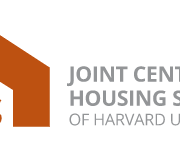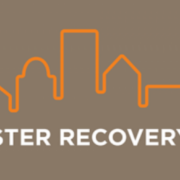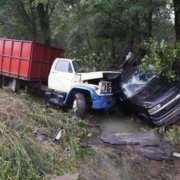Hurricane Fiona Disaster Guide
Hurricane Fiona hit Puerto Rico’s southwest coast on Sunday, September 18, 2022 as a Category 1 storm. As the hurricane makes its way towards the Dominican Republic, the territory is still experiencing devastating flooding, power outages, massive landslides, and heavy rain, with as much as 30 inches of rain fall in some areas. President Joe Biden has declared a state of emergency and Puerto Rico’s governor Pedro Pierluisi says the government is working closely with FEMA as they continue to assess the damage. HAC offers the following resources with information for nonprofits dealing with loss and damage from Hurricane Fiona: Rural Resilience in the Face of Disaster site and Disaster Response for Rural Communities Guide.
Puerto Rican Officials have stated that the territory has shelters available for those that have been displaced by the storm. Although the island’s National Guard is currently conducting rescue operations, Governor Pierluisi urges residents to remain in their homes and shelters as officials work to respond to those in need.
If you or your family has been affected by Hurricane Fiona, or wish to help victims of the hurricane, organizations like Con PR Metidos, Red Cross, and Americares all have resources available. If you are in need of emergency, transient housing, you can text SHELTER and your Zip Code to 43362 (4FEMA) to find where the shelter closest to you is located.
Apply for FEMA Assistance by registering online at www.DisasterAssistance.gov. FEMA Disaster Assistance Helpline answers questions about the help offered by FEMA, how to apply for assistance, or the information in your account.
Toll-free helpline: 1-800-621-FEMA (3362)
For hearing impaired callers only:
1-800-462-7585 (TTY)
1-800-621-3362 (Video Relay Service)
Operators are multilingual and calls are answered seven days a week from 7 a.m. to 11 p.m. ET
American Red Cross Disaster Service: For referrals and updates on Red Cross shelter services in your area, locate a local Red Cross office through: https://www.redcross.org/find-help or by calling 1-800-RED CROSS (1-800-733-2767).
The Red Cross helps disaster victims by providing safe shelter, hot meals, essential relief supplies, emotional support and health services like first aid. Trained Red Cross workers often meet one-on-one with families to develop individual plans and identify available resources to help aid recovery.
DEPARTMENT OF HOUSING AND URBAN DEVELOPMENT FIELD OFFICE
Puerto Rico
San Juan Field Office
235 Federico Costa Street, Suite 200, San Juan, PR 00918
Phone: +1 787-274-5846
Director: Efraín Maldonado
USDA RURAL DEVELOPMENT FIELD OFFICE
Camuy Sub-Area Office
EDIF 654 Plaza Suite 601
654 Ave. Munoz Rivera
San Juan, PR 00918-4129
Phone: (787) 766-5095
Director: Luis R. Garcia
STATE EMERGENCY MANAGEMENT AGENCIES
Central Office
Sr. Nino Correa Filomeno
Comisionado Interino
Email: ncorrea@prema.pr.gov
Phone: 787-724-0124
San Juan Zone
Zone Director: Sr. Jaime González
Email: jgonzalez@prema.pr.gov
Phone: 787-294-0277
Vega Baja Zone
Zone Director: Sr. Víctor Sánchez Rivera
Email: vsanchez@prema.pr.gov
Phone: 787-965-7770
Arecibo Zone
Zone Director: Sr. Juan C. Santos Santos
Email: aperez@prema.pr.gov
Phone: 787-878-9454
Aguadilla Zone
Zone Director: Sr. Elvis Morales
Email: emorales@prema.pr.gov
Phone: 787-882-6871
Mayagüez Zone
Zone Director: Sr. Alberto Trabal Alicea
Email: atrabal@prema.pr.gov
Phone: 787-833-7272
Ponce Zone
Zone Director: Sr. Paul D. Fourquet
Email: pfourquet@prema.pr.gov
Phone: 787-844-1763
Guayama Zone
Zone Director: Sr. Carlos A. Reyes
Email: careyes@prema.pr.gov
Phone: 787-864-1600
Caguas Zone
Zone Director: Sr. George L. Pacheco
Email: gpacheco@prema.pr.gov
Phone: 787-656-9643
Humacao Zone
Zone Director: Sr. Orlando Díaz flores
Email: odiaz@prema.pr.gov
Phone: 787-852-4044
Ceiba Zone
Zone Director: Sr. Francisco Bruno Orellano
Email: fbruno@prema.pr.gov
Phone: 787-863-3330







